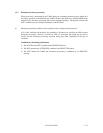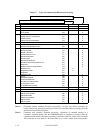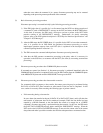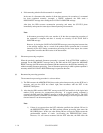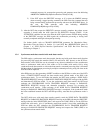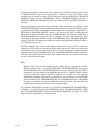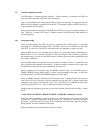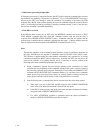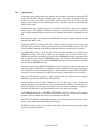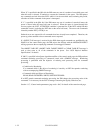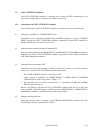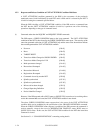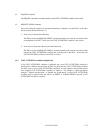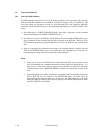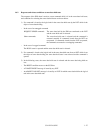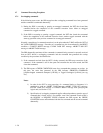C141-E124-01EN 1 - 21
1.4.2 Tagged queuing
Through the tagged queuing function, the IDD can receive multiple commands from the same INIT
or from different INITs until the command queue is full. The number of commands that it is
possible to receive by the IDD is 128 maximum, without relation to the INIT. When the IDD
receives a new command, if the command queue is full, it responds to the new command with the
QUEUE FULL status.
The IDD manages the command queue, but it is possible for the INIT to add or clear commands
from the queue. When adding a command to the queue, it is possible for the INIT to specify the
order in which commands should be executed or the command that should be executed next to the
IDD.
If the disconnect right is not recognized in the IDENTIFY message of a tagged command, the IDD
responds with a BUSY status.
Through the QUEUE TAG message, the INIT can attach a unique tag (ID) to each command. The
INIT can set that command’s pointer correctly by the tag sent when the IDD reconnects. One INIT
can issue multiple commands to the IDD only when the respective commands have unique tags.
If an ORDERED message is used, the IDD executes the other commands not included in the
ORDERED message in the order in which they are received. All commands received with a
SIMPLE message before commands are received with an ORDERED message are executed before
those commands received with the ORDERED message. All commands with SIMPLE messages
received after commands received with the ORDERED message are executed after the commands
received with the ORDERED message.
Commands received with a HEAD OF QUEUE message are registered at the top of the queue for
waiting execution. The IDD does not interrupt the current command execution and executes them
after completion of current command execution. When commands with the HEAD OF QUEUE
message are received continuously, the IDD first executes the command which was received last.
During the IDD executes or queues a tagged command, the same INIT must issue untagged
commands except when the IDD is in the sense hold state.
The IDD handles a series of linked commands as if it were processing a single command and
processes the series of commands by the tag received with the first command. A command with a
HEAD OF QUEUE received before processing of a series of linked commands is completed is
executed by the IDD after all the linked commands in the series have been executed.
The RESERVE, RELEASE and RESERVE EXTENDED commands should be issued together
with an ORDERED message. If the HEAD OF QUEUE message is used with these commands,
previously issued commands and reserved states may become redundant.
The TEST UNIT READY and INQUIRY commands do not influence the state of the IDD, so they
can be issued together with a HEAD OF QUEUE message.
The INIT can specify 2 error recovery options by the QErr bit of the control mode parameter (Page
A) of the mode select parameters.



